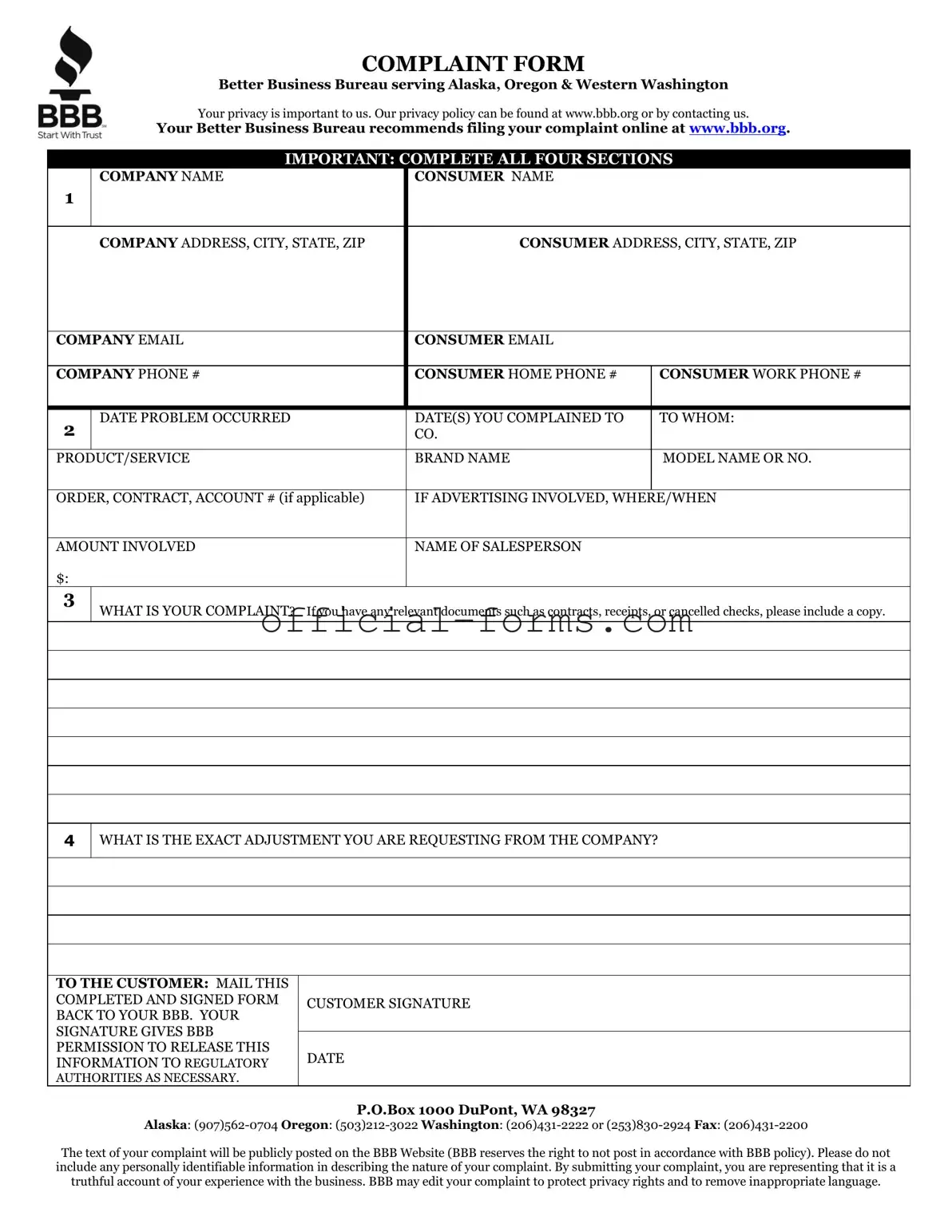When individuals decide to file a complaint with the Better Business Bureau (BBB), they often overlook important details that can hinder their case. One common mistake is providing insufficient information. Complaints that lack specific details about the issue may not convey the seriousness of the situation. It's essential to include relevant facts, dates, and descriptions to give the BBB a clear understanding of the problem.
Another frequent error involves failing to document interactions with the business. Many complainants neglect to keep records of emails, phone calls, or in-person conversations. These documents serve as vital evidence that can strengthen a complaint. Without this documentation, the BBB may struggle to assess the validity of the claims made.
Additionally, people often make the mistake of using vague language. When describing the issue, clarity is crucial. Terms like "bad service" or "unsatisfactory product" do not adequately convey the specifics of the complaint. Instead, using precise language helps the BBB grasp the nuances of the situation and respond appropriately.
Some individuals also forget to specify their desired resolution. A complaint should not only outline the problem but also indicate what the complainant hopes to achieve. Whether it’s a refund, replacement, or an apology, stating a clear resolution helps guide the BBB in addressing the concern effectively.
Moreover, submitting the complaint without reviewing it for errors is another common pitfall. Typos or grammatical mistakes can undermine the professionalism of the complaint. A well-written submission reflects seriousness and can have a positive impact on how the BBB perceives the case.
People sometimes overlook the importance of choosing the right category for their complaint. The BBB offers various categories, and selecting the most appropriate one ensures that the complaint reaches the right department. Misclassification can lead to delays or even dismissal of the complaint.
Another mistake involves not following up after submitting the complaint. Many individuals assume that once the complaint is filed, the BBB will take care of everything. However, staying engaged and checking on the status can help keep the issue on the radar and ensure it is being addressed.
Lastly, some individuals fail to recognize the potential impact of their tone. A complaint written in an overly aggressive or emotional tone may be less effective. Maintaining a respectful and professional demeanor increases the likelihood of a constructive response from the business and the BBB.
